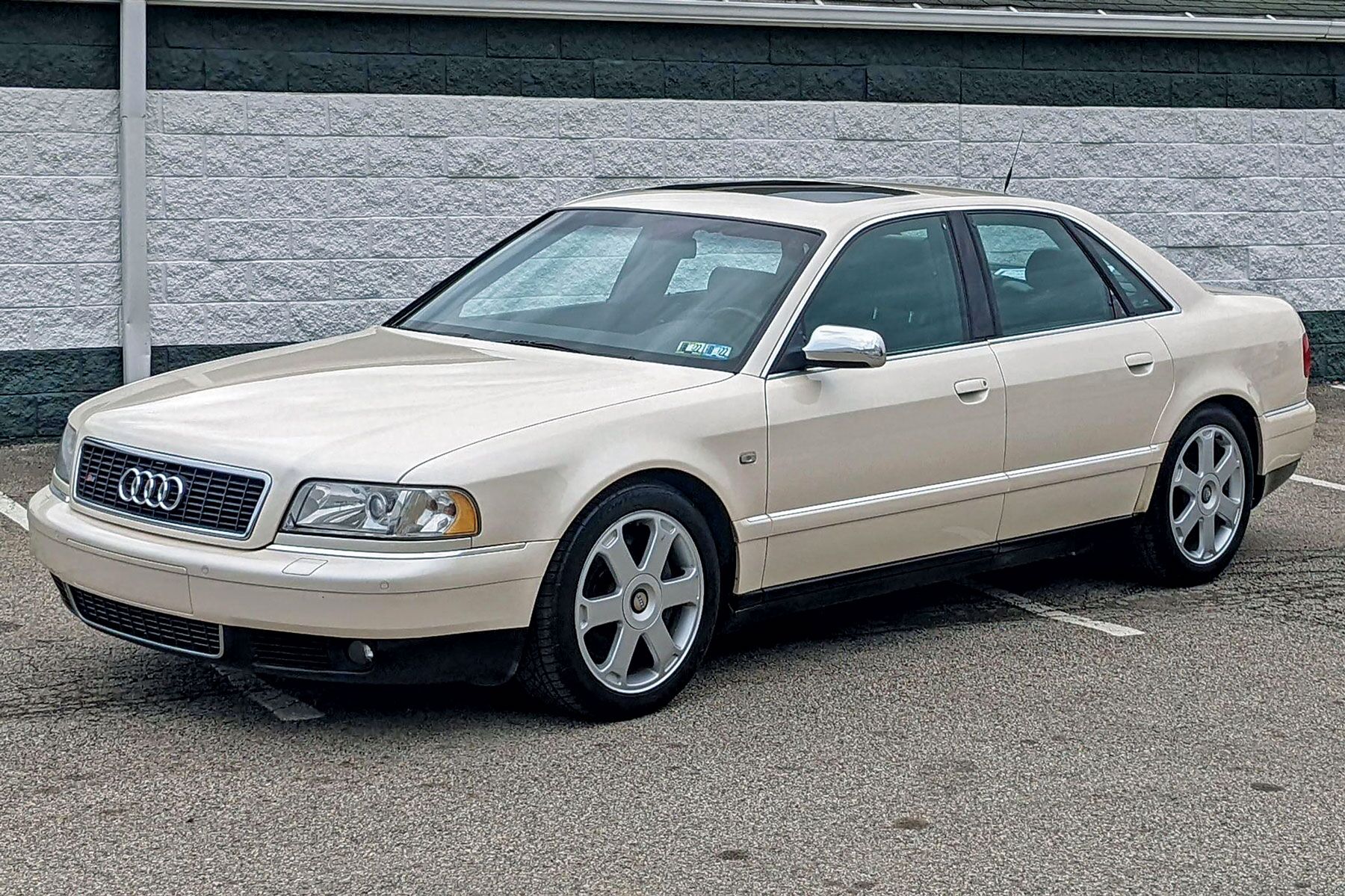
As the world nervously prepared for the click over to the year 2000, Audi was staging a comeback. A rough patch in the 1980s after the “60 Minutes” unintended-acceleration exposé had seen it nearly pack up in the U.S. and head back to Ingolstadt. The early 1990s saw a complete revamp of Audi’s lineup but no turnaround in sales.
It wasn’t until 1995, with the successful launch of the A4, that things began to change. But this Volkswagen-based sedan was an entry-level product, hardly the sort of “halo car” to lead Audi into a new era of relevance. Enter the A8, which hit U.S. showrooms as a 1997 model. It provided Audi not only with a credible alternative to the Mercedes S-Class and Lexus LS400 but also a technological showpiece.
The weight is worth the wait
The A8 had its genesis in 1982, when Ferdinand Piëch, then Audi’s head of technological development, entered into a partnership with Alcoa to develop the Audi Space Frame (ASF). This lightweight unibody would allow Audi’s all-wheel-drive cars to be comparable in weight with rear-wheel-drive competitors. Its development was rumored to have cost $700 million.
At the 1993 Frankfurt Auto Show, the ASF Concept debuted with a polished aluminum body. Its unibody was said to be 40% lighter than a comparable steel unit; a year later it went into production as the “all-aluminum” A8.
Europe got a performance-oriented S8 version at once, but the U.S. wouldn’t see the S8 until 2001. It arrived here with an updated 4.2-liter V8 making 360 horsepower and 317 lb-ft of torque. With five valves per cylinder, a variable-geometry intake manifold, high-lift camshafts and low-friction cam followers, the V8 spun to a 7,000-rpm redline.
Other markets were graced with a manual, but Americans got a ZF 5-speed automatic. Although compulsory in the segment today, the S8’s party trick was its quattro all-wheel-drive system, which put all that power to the pavement with no weight penalty — thanks to the ASF. In fact, the S8 was 100 pounds lighter than a comparable S-class. With a base price of $73k, it even undercut the new 2001 Mercedes-Benz S55 AMG by nearly $30k.
Great eight
The rev-happy V8 brought the car to life, but that wasn’t the whole story. The S8 also boasted exceptional handling and roadholding, a byproduct of its aluminum construction (and famously displayed in the 1998 John Frankenheimer film “Ronin”). Its interior reflected period tastes, with thick, soft and lounge-like leather and enough wood to build a small yacht.
Indeed, this was the beginning of Audi’s era of interior-design dominance. By modern standards, the car is refreshingly flush with buttons, switches and knobs, each with its own precise feel. The quaintly round steering wheel offers shifting controls resembling window switches at the 10- and 2-o’clock positions, and the shifter is highlighted by a chrome gate. If you can find an example that hasn’t had its MMI head unit already replaced with a more-modern touchscreen, you’ll find a display with less real estate than most smartphones. Yet the whole here is greater than the sum of its parts, with the perfect ergonomics that often seem to elude modern carmakers (we’re looking at you, Tesla).
Taking the plunge
Like any German car, an S8 requires vigilant maintenance. You need to watch out for failing camshaft-chain tensioners and be sure to replace the timing belt on schedule. If other work gets you anywhere near any gasket in the car, replace it. But for the most part, the Audi V8 is a reliable engine, even with a couple hundred thousand miles.
Audi’s switchgear doesn’t seem as susceptible to the wear and peeling seen in many VW Group products of this era. A well-cared-for car is likely still presentable, as well as being squeak- and rattle-free.
Because of the S8’s aluminum construction and the special care required for repair, you don’t see too many rebuilt or salvage-titled cars. This is also something to keep in mind as an owner, as accidents that cause anything more than cosmetic damage will likely lead to a write-off from the insurance company.
The exact number of S8s sold in the U.S. between 2001 and 2003 is difficult to verify. Audi seems quite sure it sold 813 in 2001, but is not as confident in saying it sold less than 500 in 2002 and around 300 in 2003. It is safe to say well under 2,000 made it here, so an S8 can be a challenge to find.
Partly because of its rarity but also its understated styling, the S8 is off the radar of most enthusiasts. There is, however, a devoted community of fans and online forums are full of knowledge and eager assistance. When nicer examples come up in online auctions, they are met with large engagement and knowledgeable commentary.
A wide range
S8 sales prices start in the high four-figures and range up to about $30k, mostly condition-dependent. Driver-quality cars are available in the low to mid-teens. Manual-swapped cars are becoming more common, as everything can be done with original-equipment parts, working and appearing as if factory-built. These are desirable despite their lack of originality, and are making higher prices at auction.
Two decades ago, big German performance sedans were rarities — until the S8 became the model for the high-powered, all-wheel-drive cars that have proliferated since. The significance of Audi’s aluminum technology — which beat the similarly engineered Ferrari 360 to market and also led to Audi’s own R8 supercar — certainly secures its spot in automotive history. Whether this will translate to future collectible value remains to be seen, but today’s prices seem too low. With most enthusiasts sleeping on the fact that these are great cars to own and drive, the time is right for searching out a good one. ♦